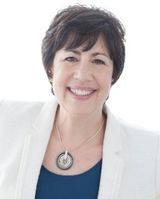A lot of us have been anxious and worried about the elections, the pandemic, and all the upheaval around us. Are you ready to create a positive shift in your life?
Each day is a new opportunity. Where do we find the answers to our questions? We each face transitions, challenges, fears, and new possibilities. Sometimes we feel stuck, lost, or worried. Or we feel that something is missing in our lives. Rather than staying stuck or looking for magic answers somewhere out there, how can we discover new possibilities and a path toward our next steps? How can we wake ourselves up to embrace a better life?

Source: Gerd Altman/Pixabay
Striving to live your life as fully as you can is a process that is on-going. It is not a destination you can just reach and remain at. Typically, living our lives fully is not about money, external power, status, or acquiring possessions. Rather, living our best lives — living up to our unique personal potential — requires courage, listening, discernment, and increasingly engaging our values and strengths, learning to distinguish our needs from our wants, so that we can discover and express our best selves (Kaufman, 2020; Niemiec, 2018; Kirschenbaum H. & Henderson, V.L.,1989). This process can be enhanced by employing a growth mindset, believing that our efforts and directed energies can empower our abilities to learn, grow, and change (Dweck, 2006).
Drawing on ideas from positive psychology, neuroscience, and mindfulness, here’s a 5-step discernment process to help you gain clarity, re-energize, and discover your next steps on life’s journey.
1. Pause: Mindfully notice that you’re breathing. Notice the natural flow of your breath.
2. Listen: Tune into your inner voice – the still small voice that guides you. Listen to messages from your mind, body, and spirit.
3. Reflect: Notice and identify your feelings and reactions.
4. Discern: Where do you feel called? Sift through your awareness and intuitive wisdom along with realities, possibilities, and choices. What additional information do you need?
5. Act: What direction do you want to go toward? What’s the next right thing? Mindfully choose your next steps.
To try this process, offer yourself a few moments of quiet. This can be an opportunity to pause, pay attention, and reflect as you follow these five steps to create a habit of greater discernment in your life.
1. Pause: Create an intermission in your day. Offer yourself a few moments of quiet contemplation to help you tune into your inner voice. Make sure you’re in a safe space. Let yourself get into a comfortable position and gently become aware that you are breathing. Simply notice your breath as it flows in and out of your body, breathing mindfully as you meet the moment. Pause here, noticing the flow of your breathing for a brief time that feels right to you.
2. Listen: What’s on your mind and in your heart? Gently notice where your attention gravitates and let yourself be present where you are called in this moment. Open your awareness to your inner voice and your intuition. What is the voice that offers you guidance and wisdom letting you know? What do you know deep inside that perhaps you don’t often let yourself notice? What are you sensing with your inner compass or guide? Perhaps an image, a hunch, a fleeting feeling, or a knowing just waiting there for you to become aware of.
3. Reflect: What are you noticing about how you feel – excited, content, sad, worried, resentful, angry, hopeful, or another reaction? Try to name the feeling or emotion for yourself. What are you noticing in your body? What is your experience?
4. Discern: Consider these self-inquiries and any others that come to you: What is most significant for me to pay attention to right now? Where do I feel called? Where do I feel inspiration, such as: energy, joy, understanding, happiness, openness, gratitude, zest? Where do I feel desolation, such as: frustration, confusion, anger, restlessness, meaninglessness? What do I want to move away from? What can I release or let go of? What beckons me to move toward? What am I aware of now that I hadn’t noticed or let myself see before?
5. Act: Consider what may have shifted or changed for you during this process? What did you learn? What direction do you want to go toward? What is your next right step?
**This post is for educational purposes and should not substitute for psychotherapy with a qualified professional.
References
Dweck, C.S. (2006), Mindset: The new psychology of success. New York, NY: Random House.
Kaufman, S.B. (2020). Transcend: The new science of self-actualization. New York, NY: Tarcher Perigree.
Kirschenbaum H. & Henderson, V.L. (1989). The Carl Rogers reader. Boston, MA: Houghton Mifflin Company.More
About the Author

Ilene Berns-Zare, PsyD, is a life and leadership coach. She writes about navigating personal and professional life with resilience, meaning, mindfulness, and well-being.Online:Personal Website, Twitter, Facebook, LinkedIn